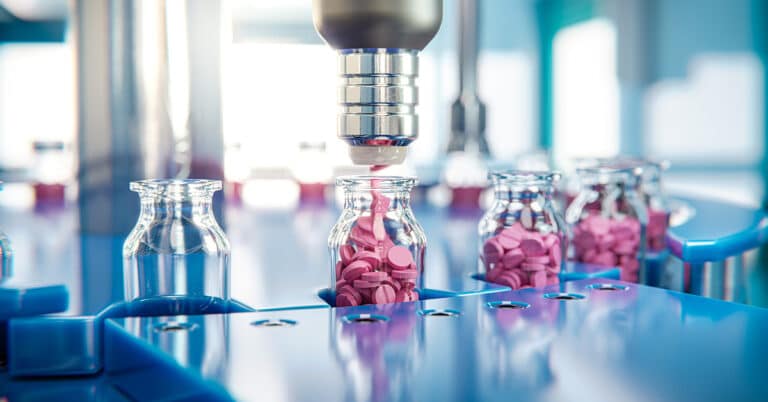While the Production team is responsible for making what the business sells, they can’t achieve their goals without support from Maintenance. Despite their interdependence, conflicts can sometimes arise between Maintenance and Production teams.
Production is typically driven by output and cost targets, which results in machines and production lines being operated at maximum capacity for extended periods. However, this approach can increase the risk of breakdowns, lower product quality and compromise safety.
Industrial maintenance, however, is about working to reduce machine downtime, while minimizing costs and maximizing machine lifespan. Achieving these objectives requires dedicating time to equipment for preventive maintenance (PM) work. Without a unified approach between the Maintenance and Production teams, conflict is inevitable.
Further complications arise from the use of Just-in-Time (JIT) production and Lean manufacturing practices and the frequency with which Production schedules change. Without synergy between the Maintenance and Production teams, more disruption, downtime and machine problems are inevitable. On top of this, Maintenance activity can have a big impact on quality control in manufacturing.
In this blog we explore the Maintenance role in building an effective and productive team.
Common barriers between Maintenance and Production
It’s not just that Maintenance teams and Production have different goals — the way their performance is measured can bring them into conflict. This unintentional dynamic fosters organizational silo thinking, where communication flows vertically within teams but not horizontally between them.
The three barriers often seen between Production and Maintenance personnel are:
- Conflicting KPIs
- Communication gaps
- Cultural and siloed mindsets
Conflicting KPIs
Performance of Production operations is typically measured by output and manufacturing KPIs like schedule adherence and cost over/under runs. Maintenance team KPIs typically include Mean Time Before Failure (MTBF), Availability, Planned Maintenance Percentage (PMP) and maintenance task backlog.
For Maintenance, meeting the targets they’re given requires time on the machines. It can be tough, however, for Production to grant this if it will limit their ability to hit their objectives.
Not performing PM invariably reduces PMP KPI performance and often leads to an increase in breakdowns. Production expects an expedited response to such events, increasing maintenance costs.
Communication gaps
The performance of both teams suffers when information isn’t shared between Production and Maintenance. Production workers may be disinclined to report indications of potential problems in case Maintenance wants to stop the machine or production line to investigate. Conversely, Maintenance might schedule line-stopping PM for a time that suits their workload and shift patterns but occurs at the end of the month when Production is trying to meet targets.
Cultural and siloed mindsets
When KPIs conflict and communication is poor, teams might blame each other for slowdowns or breakdowns rather than work collaboratively on root causes. This only serves to accentuate the problems, which may be reinforced by outdated reporting lines that keep teams separate.
Benefits of aligning Maintenance and Production
Barriers between Production and the Maintenance department increase machine problems and downtime, while reducing the effectiveness of Maintenance operations. Aligning the two functions so they work cooperatively toward shared goals yields the following benefits:
- Reduced downtime: Problems are reported earlier, allowing repairs to be scheduled at times that are convenient for production. As a result, the PMP rises, leading to fewer breakdowns.
- Improved safety: Potential hazards are addressed before they require line or machine shutdowns.
- Faster changeovers: Improved communication helps Maintenance better support line changeovers, reducing the time spent on this nonproductive activity. This can facilitate shorter production runs and increase flexibility.
- Improved product quality: Problems are addressed earlier, minimizing the increase in variation that would otherwise result from wear and other faults.
- Better resource utilization: PM is scheduled and performed during periods that minimally affect Production operations. Increased PMP levels lead to fewer breakdowns and reduce the necessity for emergency Maintenance technician callouts. Additionally, improved maintenance planning can lower spare parts inventories.
- Higher employee morale: Unreliable equipment can decrease Production workers morale, while Maintenance teams may dislike emergency callouts and feel their advice is ignored. What’s more, no one in Maintenance and Production enjoys the “us and them” mentality that can arise from siloed operations. Improved alignment fosters a more collaborative culture and the use of cross-functional teams, leading to more proactive problem-solving and a more effective maintenance process.
Key strategies for effective collaboration
How can managers go about creating cross-function alignment so Maintenance and Production collaborate rather than compete? Here are four strategies with proven track records of success.
- Shared KPIs and balanced scorecards: A first step is to ensure Maintenance and Production team members are working toward the same objectives. This means sharing in KPIs. Overall Equipment Effectiveness — which combines availability, speed and quality in one metric — is especially powerful. Another step is to adopt the “balanced scorecard” methodology. This means establishing shared measures for financial performance, customer satisfaction (customers can be internal), functioning of internal processes and employee development.
- Regular joint meetings and briefings: Maintenance should attend daily and weekly Production meetings where schedules, priorities and changes are discussed. This provides them with a better view into Production needs and priorities. At the same time, it provides an opportunity to share how Maintenance priorities are established and to discuss Maintenance needs.
- Co-located workflows: Maintenance and Production can be encouraged to act as one team by using digital tools that show them the same data, preventing disputes over differently collected numbers. Placing Maintenance liaisons on the Production floor or Production planners in the Maintenance department are other effective barrier-breaking tools.
- Cross-training and education: Teach Production workers how the equipment they use operates and how to perform basic machine inspections and maintenance tasks, which are often included in Total Productive Maintenance (TPM). This approach reduces the maintenance workload, allowing more time for PM, and helps workers identify the early signs of machine problems. It can be equally useful to educate Maintenance on Production flows and changeovers, as this knowledge can help them better support production needs.
Role of technology and data sharing in team collaboration
Capturing the data that supports collaboration can be a laborious undertaking if done manually. Fortunately, today there are new and emerging technologies that simplify and support this effort. The lynchpin of this effort is the Computerized Maintenance Management System (CMMS).
The CMMS holds all the records of manufacturing assets and often parts inventories. It is used for scheduling maintenance tasks and recording the work performed. Maintenance KPIs are usually measured through data captured or logged by the CMMS.
Closely related to the CMMS are predictive maintenance and machine health monitoring technologies, implemented today by many manufacturers. These use sensors and predictive maintenance analytics to detect early signs of wear. These can be shared with Production scheduling to plan short downtime windows.
Production teams seldom have or want access to the CMMS: Their focus is using the ERP system for manufacturing rather than maintenance software. However, integrating these into a single platform that logs work orders, tracks inventory and updates production schedules helps with achieving collaboration and streamlines workflows.
CMMS/ERP integration enables calculation and tracking of shared KPIs reflecting both production rate and equipment health. For greater visibility, these can be shared on performance dashboards available to both Production and Maintenance teams. An example of such an approach in action can be seen in the Reliability 360® Machine Health Monitoring solution from ATS.
Building a collaborative manufacturing culture
Shared KPIs and better communication go a long way toward improving alignment between Maintenance and Production. However, fostering a collaborative culture is more challenging. Building trust and respect is crucial, and actions that can help include:
- Open communication and conflict resolution: Leadership must champion a “one team” ethos that fosters mutual respect and shared accountability and demonstrate, by their actions, that they believe in this. Additionally, conflict management training can deepen the understanding of the value of diverse perspectives.
- Incentivize joint projects: Set up and encourage efforts that enhance both equipment uptime and production output. Recognize achievements with awards and bonuses to reinforce the desired behaviors among teams.
- Pilot programs: Wholesale change can be very difficult to achieve. A better strategy is to start with one or a few pilot programs, which offer valuable learning opportunities and allow time for adjustments before a full-scale rollout across the plant.
Start aligning Maintenance and Production today
When manufacturers are striving to drive down costs and increase the intensity with which assets are used, it’s essential for Maintenance and Production to collaborate. Failing to do so increases unplanned downtime, with all the associated disruption to Production and sub-optimal use of Maintenance resources, plus the impacts on KPIs.
Addressing this issue involves implementing shared KPIs for both functions, utilizing predictive maintenance and advanced technology tools, and enhancing communication. Readers eager to learn more should reach out to ATS for advanced maintenance solutions, data-driven machine monitoring and industrial maintenance staffing.






